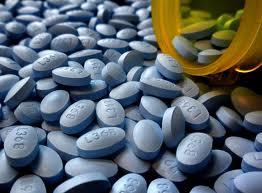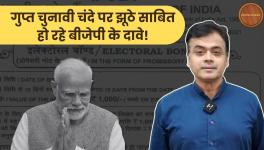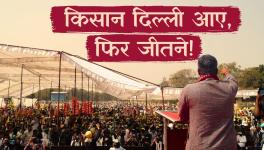Who Manufactures Dirty Medicines?
A few weeks back Fortune magazine and CNN carried a long online blog titled ‘Dirty Medicine’ by Dinesh Thakur, a former employ of Ranbaxy, where he recounts how he came across several procedural and other lapses in the company’s manufacturing facilities.
Since then the Fortune blog has become one of the most widely circulated and commented upon business stories in the world. The story received attention as it came in the wake of a US$ 500 million fine, slapped on the drug manufacturer Ranbaxy by the US Food and Drugs Administration (USFDA). Ranbaxy was found guilty on 7 counts – 3 criminal charges and 4 civil charges.

Image Courtesy: flickr.com
If the only substance in the story had been about a company being charged with malpractice by a regulatory agency and being asked to pay a fine, that would not have been a rare occurrence. Companies across the world are known to flout regulatory standards and norms, and when caught out agree to settle by paying a fine. This is so particularly in the case of pharmaceutical companies, and there have been a number of similar instances reported in the past few years.
Threat to Big Pharma from Indian Generics
What makes the Ranbaxy story special is the story’s link to India’s pharmaceutical industry. Widely acknowledged as one of the few success stories of India’s manufacturing sector, the pharmaceutical industry has come to be known as the ‘pharmacy of the South’. It has been so termed as it is by far the largest producer of finished medicinal products in the global South and is the largest global source of low-cost medicines. Exports from India form the lifeline for patients in many Low and Middle Income countries in the world. Further exports of cheap medicines are no more limited to poor countries, Indian medicines are exported in very large quantities to the United States and Europe as well.
For long the pharmaceutical industry situated in Europe and the US have perceived the Indian industry as a threat to their domination of the global market. The global market for pharmaceutical products stands today at more than US$ 1,000 Billion (approximately Rs.55,00,000 crores). Sixteen companies (all located in the US, Europe and Japan) account for about 55% of these global sales. The entire Indian pharmaceutical industry accounts for less than 2% of the value of global sales (around Rs.1,00,000 crores). But because Indian drugs are much cheaper than those sold by the top multinational companies, by volume the Indian industry accounts for 8% of global medicines consumption (the third largest in the world). Not only do Indian companies contribute to a large proportion, by volume, of medicines sold, the volume of Indian exports to the US and Europe has been rising steadily and over 50% of Indian medicines are exported.
The global pharmaceuticals industry, dominated by ‘big pharma’ (the sixteen largest companies) for decades, has grown exponentially through a business model that is based on keeping drug prices high by continuously misusing its monopoly power. Much of the monopoly power that big pharma wields comes from the global patent regime, that allows 20 years of monopoly to a company that first puts a medicine on the market. Unfortunately for big pharma, its story is starting to unravel. There are very few new drugs in the pipeline that can continue to maintain its monopoly status. On the other hand a number of medicines that fuelled its growth are going off patent – i.e. big pharma is going to lose its monopoly position. Between 2011 and 2015 several of the most profitable drugs (which big pharma calls block-buster drugs) have gone off patents or shall go off patents. The combined sales of these drugs are an estimated US$ 250 Billion – almost 40% of big pharma’s global sales. As we note earlier, there are very few promising drugs in the pipeline that are likely to fully replace these drugs as money spinners for big pharma.
When drugs go off patents generic manufacturers, that is those who do not hold the patents, are able to enter the market and create competition in a hitherto monopoly situation. Typically when generic manufactures are able to sell their medicines, drug prices fall by 90-95% -- i.e. they become available at prices that are one-tenth to one-twentieth of existing prices. This is good for patients but bad news for big-pharma. India enters the picture here as Indian companies are often based placed to enter the generics market, even in developed countries. This is the reason why big-pharma perceives Indian generics as a threat.
Unable and unwilling (because this goes against their business model) to compete on prices, big-pharma has campaigned assiduously to create doubts about the quality of Indian medicines that are sold in their own markets. This is the larger context within which the Ranbaxy story has to be understood.
Ranbaxy is guilty as charged
Let us return to the specific case involving Ranbaxy. The media, both in India and abroad, has continued to report that Ranbaxy was accused of selling adulterated drugs by the USFDA. Technically this is correct under US law. But the US definition is very different from what we understand as adulterated in India – i.e. the deliberate mixing of other ingredients while manufacturing a product. After the Ranbaxy story became a public issue the World Health Organization issued an advisory regarding the use of medicines manufactured by Ranbaxy. In this note the WHO clarified that: “adulterated has a specific legal meaning in the U.S. If a company is not complying with current Good Manufacturing Practice (cGMP) Regulations, any medicines that it manufactures are considered to be adulterated under the law. In other words, its medicines are not manufactured under conditions that comply with cGMP. It does not mean that the medicine is necessarily sub-standard.”
In fact the USFDA is on record for having stated that “it did not receive any reports of patients being harmed by the drugs made at the plants in question”. In fact Ranbaxy’s drugs were not found to be deficient as regards the ingredients present in them or as regards their standards, or as regards their bio-availability (i.e. whether its drug has identical effect in the body as the original drug). We need to remember that the USFDA had been investigating Ranbaxy since 2006. If there had been even a single case where its drug was not found to have been of requisite standard, then the USFDA would surely have made such reports public.
Why then was Ranbaxy charged? Ranbaxy was charged because it lied to the USFDA regarding its documentation and procedures followed in its manufacturing facilities. Ranbaxy provided data regarding its regulatory procedures that it had deliberately falsified. USFDA regulations are often quiet different from what drug regulatory agencies in India require, and hence very distinct and different documentation is required to be submitted to the USDA to get marketing approval in the US. The fact that Ranbaxy provided false documents does not prove that its drugs were of bad quality, and by extension it is definitely not evidence that Indian generic drugs are generally of poor quality.
Yes, Ranbaxy was guilty of deliberately falsifying date to get regulatory approval in the US. As any company that does business in a foreign country Ranbaxy needed to comply with laws in the host country. Having been found guilty of non-compliance it was rightly charged by the USFDA based on US laws. It is qquite possible that Ranbaxy lied and cooked up data in its hurry to get into the US market. Specifically, it had an interest in being the first generic to enter the US market for Atorvastatin (an anti-cholesterol drug sold under the brand name Lipitor by Pfizer, the drug went off patent in 2011, but at its peak in 2006 the drug’s global sales of US$ 12.6 Billion accounted for more than one-third of Pfizer’s entire annual revenue). Under US law the first generic to enter the market gets a market exclusivity of 180 days.
Orchestrated Campaign to Demonise Indian Generics
What is however of much graver concern is the way the Ranbaxy episode is being used to mount an orchestrated campaign against generic medicines manufactured in India. Big pharma and its supporters in the corporate controlled media have gleefully lapped up the issue to demonise and deligitimise Indian drugs. The campaign, even in India, has been ill informed and ill directed.
The entire episode is being posed as if it represents a problem of poor quality medicines being produced in India. As we have seen earlier there is no evidence, even in the particular Ranbaxy case, that the drugs were of poor quality. Another information that has been deliberately suppressed is that the Ranbaxy case is by no means unique. The two biggest pay-outs necessitated by USFDA investigations have actually involved two of the largest multinational corporations – Glaxo and Pfizer (both part of big pharma). In 2009 Pfizer was forced to pay US$ 2.3 Billion after being charged with illegally marketing drugs that it was not permitted to. It was further charged for bribery, in the course of its attempt to continue to market illegally.
In 2012, Glaxo paid US$ 3 Billion after facing criminal charges of illegally marketing drugs and withholding safety data from U.S. regulators. Again, in 2010, Glaxo paid US$ 750 million after pleading guilty of criminal and civil liability regarding manufacturing deficiencies at one of its plants. According to the USFDA, the company’s manufacturing operations failed to ensure that its drugs were free of contamination from microorganisms.
We return to the Fortune story and the first hand account by Dinesh Thakur. The story is titled ‘Dirty Medicine’. The unstated inference is that a ‘dirty country’ (India) in ‘dity facilities’ (generic manufacturing units) produces ‘dirty medicines’. When Dinesh Thakur, in the Fortune article, talks about how he had to switch from a Ranbaxy medicine to a Glaxo medicine to cure his son’s ear infection, this bias is clearly evident. As a ‘whistleblower’ for the USFDA, Dinesh Thakur was paid Rs.266 crores, and he is entitled to his opinion. What he is not entitled to is to front for big pharma and sully the entire Indian generics industry.
All that we discuss, however, should not be construed as an affirmation of existing drug regulatory procedures in India. The Central Drugs Standard Control Organisation (CDSCO) in India is by no means a model organisation. It is under-resourced, there are huge shortages of trained inspectors, and the organisation continues to exist under the shadow of corruption charges (some of which were clearly true as regards its earlier avatar – the DCGI). The knee-jerk reactions in India, with hospital chains attempting to bar generics and a proposed PIL in the Supreme court, misses the entire point. There is no evidence that deficiencies in standards are the domain of Indian generic manufacturers. In fact all MNCs operating in India get a portion (often the large majority) of their products manufactured in the small and medium sector. Quality of drugs in India is an issue that has to be addressed by a comprehensive scaling up of regulatory practices. This is an urgent necessity, independent of the Ranbaxy case and has to involve the products of all companies.
It is ironic that Ranbaxy, through the present episode, has come to exemplify Indian generic manufacturers. In fact the majority shareholding in Ranbaxy is held by Daichi – a Japanese company that is also a part of the sixteen big pharma companies. But then, as we have seen earlier, the primary intent in the course of the present controversy was never about targeting Ranbaxy. It was about targeting affordable generic medicines from Indian manufacturers, so that big pharma could continue to profit at the expense of illness and peoples vulnerabilities.
Disclaimer: The views expressed here are the author's personal views, and do not necessarily represent the views of Newsclick
Get the latest reports & analysis with people's perspective on Protests, movements & deep analytical videos, discussions of the current affairs in your Telegram app. Subscribe to NewsClick's Telegram channel & get Real-Time updates on stories, as they get published on our website.














